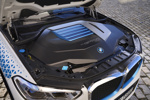Getting your licence these days is perhaps not as easy as it was. Imagine how embarrassed many of us would have been to have had two failed attempts, yet now this is the norm.
First there is the theory test and anyone who has recently had any involvement with this will know it is not that easy. Nor is the practical test a piece of cake and only a few minor faults will still earn a tick in the fail box.
So the industry should be grateful whenever someone soldiers through it all and earns their licence. At that point they become a potential entrant to the car market, which means another sale.
It is interesting to look at how much of a contribution new drivers make to the market. In the UK there are about 340 test centres handling up to 6,000 tests per day. And that adds up to an extra 2,000 people per day becoming potential car buyers. So, what do new drivers look for when they start shopping for their own wheels? Clearly some want to be seen in an F-plate Vauxhall Nova, with an exhaust that would be considered loud were it not for the 28-speaker sound system that also triples the car's value.
The 'sensible' type goes for a regular small car, either new or used, such as a Renault Clio, Ford Ka or Fiat Punto. Typically these are the types of car they learned in. Then there are those who use cars belonging to family or friends. One prevalent factor among new drivers, however, is their common reluctance to go for anything as large as a Ford Mondeo or Vauxhall Vectra. These cars and their ilk will come later, with the job or with the family. The new driver will almost always stick with the supermini end of the market with its lower insurance costs to help to get them on the road solo.
For many people, maybe the majority, there is a natural life progression from the small car to something a bit sportier or roomier, then maybe a people carrier, before settling down to a normal saloon. Of course the traditional mid-life crisis then takes you back to the sports car – or even a high-powered motorcycle.
It was interesting to look at the magazine for new drivers given to my daughter. The cover featured a left-hand drive open-topped American car festooned with balloons and with the words 'Just Passed' on it. Not very representative of the norm.
Then, on page 20, you find guidance on how to take your car abroad. All this before the reader has even driven on a motorway in the UK. Advice on how to drive safely on the right seems a little out of place when there is still so much to learn about driving on the left. Then there is an explanation of the company car tax system.
However, there is one piece that brings the reality of driving today into focus. In 1997, the New Drivers Act was introduced and part of it states that any new driver who gets six points within two-years risks having their licence revoked and having to go through the whole process again.
Since then, well over 40,000 licences have been revoked and with them, the roads made safer for everyone else. Probably the most immediately useful piece of information for the new driver.'















Login to comment
Comments
No comments have been made yet.